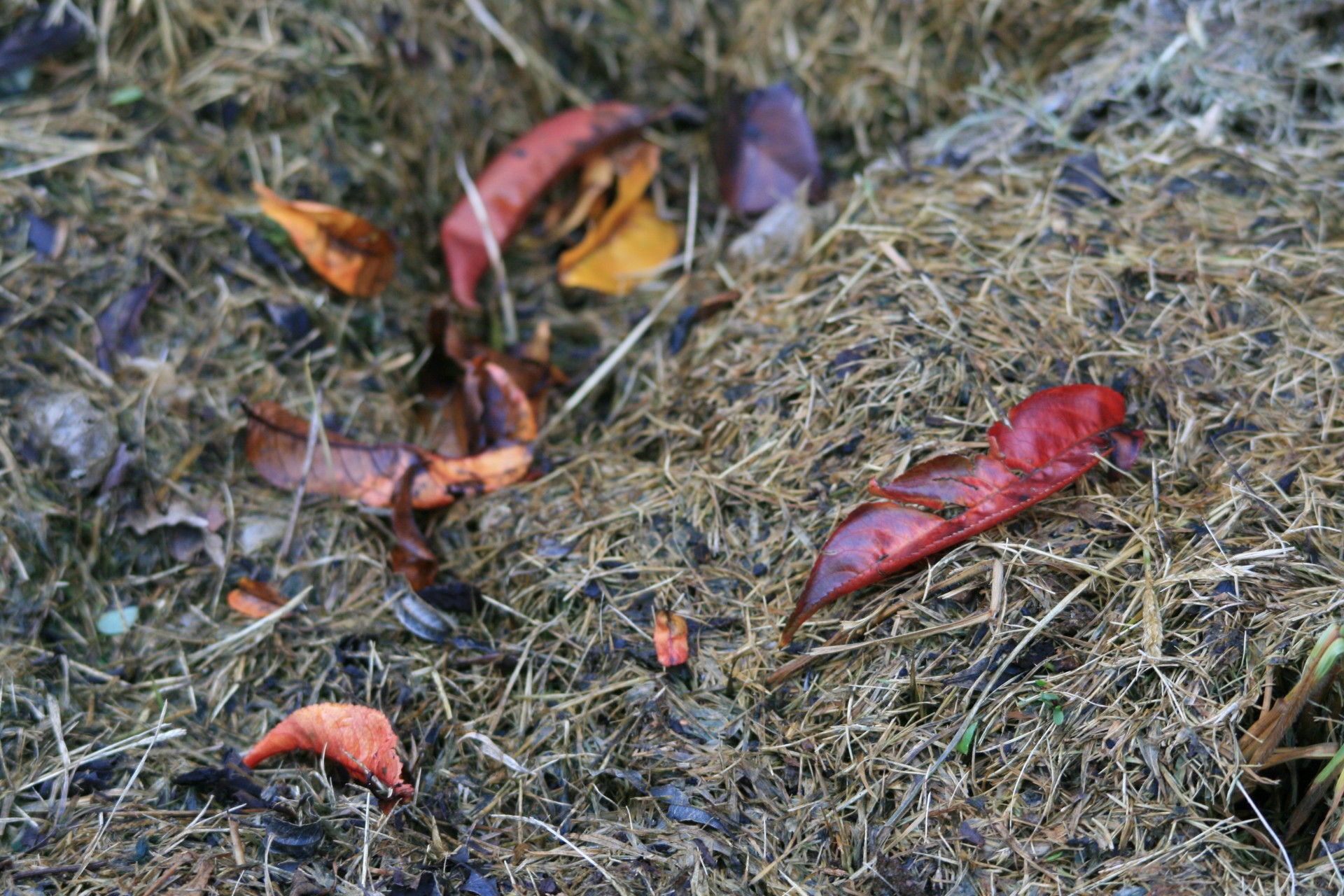
This lesson allows students to model and track decomposition over time.
- Items that will decompose (wood chips, plant material, newspaper, food)
- Items that will not decompose (glass, plastic, metal, ceramic) small enough to fit into a larger plastic bottle
- Garden Journal
Activity Preparation
- Prepare the decomposition bottle using a 2 liter soda bottle (make one per class) according to the steps below:
- Fill a two-liter bottle with hot water and replace the cap. The heat will melt the glue and allow you to peel off the label and twist off the bottom easily.
- Study Figures 2 through 5 in the diagram to determine where to cut the bottles for a two or three bottle compost column.
- Pour out the water and place the bottle on its side against a solid object. Mark a ring on the bottle (Figure 6) where you want to make the cut. Use a razor blade or knife to start a cut after marking the bottles, and then finish the cut with scissors (Figure7). Note in Figure 5 that the shoulder of bottle #3 is cut at so that it fits into bottle #2.
- Provide air and testing holes by poking holes in the sides of the bottle with a hot needle (heated in a candle flame, or a bunsen burner) or the soldering iron. Put a piece of netting or nylon stocking over the spout of bottle #2, securing it with a rubber band.
- Put the pieces of column together, Figure 8.
To Decompose or Not to Decompose
- Draw a table on the whiteboard with two columns, one labeled “decompose” and the other “not decompose.”
- Show students examples of items that will decompose and those that won’t. Students share other examples of items according to each category, as you write them on the board. (Little microbes will only eat certain things you throw in the trash.)
- Ask:
- What do we need for decomposition?
- How long does it take a banana peel, Kleenex, newspaper, plastic bottle, aluminum can, or glass bottle to decompose in a dump?
- Review the Decomposition Cycle Diagram, steps one through four. Students re-create the diagram in their garden journals.
Making Decomposition Bottles
- Show different stages of decomposed compost. Invite students to use their senses to explore each stage.
- Ask: What do you see, smell, feel?
- Introduce the project of making a decomposition bottle as a miniature compost pile or landfill or as leaf litter on a forest floor.
- Show students buckets or various items that will decompose and those that will not.
- Students sort objects according to whether they will decompose or not.
- Place an assortment of each category into the prepared plastic bottle.
- Place masking tape on the bottle and write the class, their name, and the date. Students hang the bottles in a shaded place in the garden
- Through the sides of the bottle you can observe different substances decompose and explore how moisture, air, temperature and light affect the process. Many landfills seal garbage in the earth, excluding air and moisture.
- Ask
- How might this affect decomposition?
- Will a foam cup ever rot?
- Which do you think decomposes faster, banana peels or leaves?
- If you add layers of soil to the column, how might they affect the decomposition process?
- In their garden journals, students write their hypotheses about what will happen over time and make a list of all of the items they placed in the bottle.
- Prompt them tomake a timeline for checking the bottles throughout the year
Student Reflection
- What stage in the decomposition cycle will you expect the contents in the bottle to be at in a month, in 5 months, at the end of the year?
- A series of events that happen over and over in the same order
- A series of events that are repeated over and over in the same order
Academic Standards
Crosscutting Concepts
Relative scales allow objects and events to be compared and described (e.g., bigger and smaller; hotter and colder; faster and slower). Standard units are used to measure length. Natural objects and/or observable phenomena exist from the very small to the immensely large or from very short to very long time periods.
Some systems appear stable, but over long periods of time will eventually change.
Disciplinary Core Ideas
Interdependent Relationships in Ecosystems: Plants depend on water and light to grow. Plants depend on animals for pollination or to move their seeds around. Decomposition eventually restores (recycles) some materials back to the soil.
Science & Engineering Practices
Use a model to test cause and effect relationships or interactions concerning the functioning of a natural or designed system.
This lesson is part of the Berkeley Unified School District's Gardening and Cooking Program curriculum.




